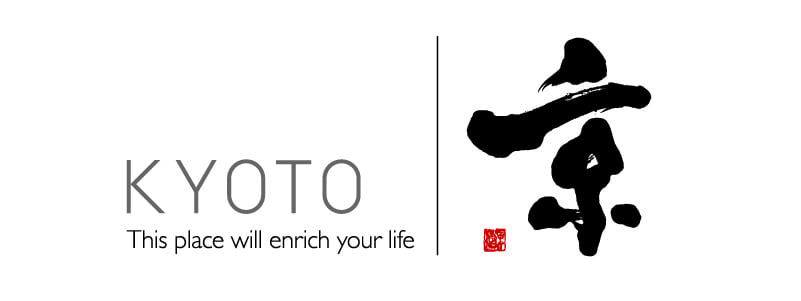Term archive
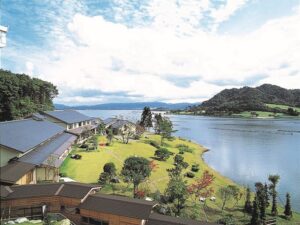
投稿タイプ:stay
Pure Japanese Style Ryotei, Hekisui Gyoen
Hekisui Gyoen is a Japanese-style ryokan inn located on the Kumihama Peninsula, which is designated as one of Japan’s scenic views and part of the San'in Kaigan National Park. The building is an exquisite example of sukiya-zukuri style architecture, built on a 33km2 plot, with a total of 14 rooms. The inn also has access to many outstanding tourist destinations, including one of Japan’s three famous views, Amanohashidate, the boathouses of Ine on the Kyotango Peninsula, Izushi Castle Town, Kinosaki Onsen, and Kinoshita Marine World. The 100% natural hot spring water in Hekisui Gyoen's baths includes minerals like sodium and calcium sulfate, which are thought to be beneficial for neuralgia, stiff shoulders, and circulation. Day trip bathing is also available. The abundance of minerals from the surrounding mountains, the Kumihama Peninsula and the rough waters of the Japan Sea side means that you can enjoy rich seafood and seasonal produce from the Kyotango region. Our seasonal specialties include isaza (a kind of goby) in spring, rock oysters in summer, black throat sea perch and matsutake mushrooms in autumn, and matsuba crabs and magaki oysters in winter.
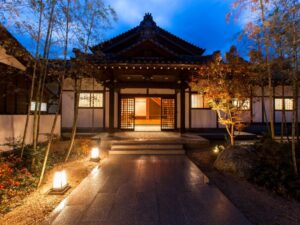
投稿タイプ:stay
Kasyouen Hanare Kai
Facing the Japan sea, the Kasyouen Hanare Kai is a ryokan inn shaped like a ship. Using over 4297.5 square meters for 15 guest rooms, this luxurious space also has open air baths that look out to the horizon. In the restaurant, there are also semi-private spaces for you to enjoy the formal kaiseki course delicacies made from seasonal ingredients, carefully chosen by the chef from the Sea of Japan and Tango and Tajima regions. One advantage of this ryokan is that overnight fees also include drinks at dinner, drinks in the refrigerator in the rooms (does not include additional drinks) and café use. Beginning on September 1st, 2018, Kasyouen Hanare Kai is open only to adult guests (middle school age and above).
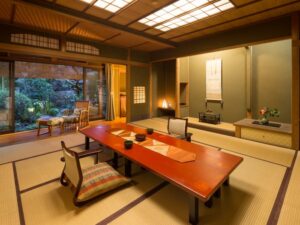
投稿タイプ:stay
Charoku Bekkan
Charoku Bekkan is situated in front of Shimazaki Park, near Amanohashidate, one of Japan's three great scenic views. Surrounded by hedges, it is a small inn with 11 rooms and beautiful gardens. Built in the sukiya-zukuri style with some shoin(study)-style rooms, everything from the traditional alcoves (tokonoma) to the transom windows were chosen with care. Built with wood and stone bases, the public baths ("Taro no yu" and "Komachi no yu") face the gardens. The two open air baths incorporate famous shigaraki ware pottery, and have great atmosphere. Meals (Kyoto style, formally-arranged kaiseki course meals) use seasonal ingredients from the sea and mountains: isaza (ice goby) and mountain herbs in the spring, flying fish in the early summer, Tango egg cockle and oysters in the summer, snapper and squid in the autumn, and snow crab (a symbol of winter for the Japanese) with yellowtail in the winter. There is also a popular crab feast in the winter. Female visitors will get to choose the color of their yukata.
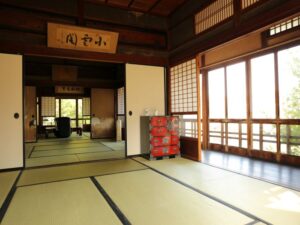
投稿タイプ:stay
Shoreki-ji Temple
The Shoreki-ji Temple, constructed in 942, is situated in Ayabe City next to the Yura-gawa River. The temple enshrines a statue of the bodhisattva Kannon carved by the temple’s founder, Kuya, a famous priest in the Heian era (794-1185). The statue can only be seen by the public every 33 years. Some of the temple's other treasures include a Thousand-Armed Kannon statue (a designated cultural property of Ayabe City) and a nirvana painting (an Important Cultural Property).
The dry rock garden, which was built in the middle of the Edo period (1603-1868), is a designated scenic spot in Kyoto Prefecture. There are annually flowering plants such as azaleas and bushclover that color the garden throughout the seasons, as well as many ancient trees, including a zelkova tree selected as one of the ten famous trees of Ayabe City.
Shoreki-ji Temple also provides a unique, all-inclusiv temple-stay experience', giving visitors the chance to live in a hundred-year-old tatami room (individuals or groups of a maximum of 6). The experience also includes meals, and for dinner, guests can choose between local specialties (high quality chicken from a local farm) and the traditional vegetarian course meals of Buddhist monks.
Highlights include the various experiences you can try out at the temple by making a reservation in advance. These include meditation in the bamboo grotto, sutra writing, sutra recitation, ablution, trying out Buddhist music instruments, wearing priest’s clothing, plating your own food Japanese style, and last but not least, drawing Goshuin inscriptions. Other activities include baking pizza in the hand-made oven, and season-limited activities such as nagashi-soumen (noodles eaten by sending them down flowing water in a bamboo chute) and canoeing (must have at least 4 people, 4,000 yen per capita/ 2 hours).
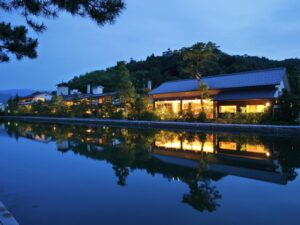
投稿タイプ:stay
Monjusou
Get up close and personal with Amanohashidate at Monjusou, where all the guest rooms are designed for the best view possible overlooking the Amanohashidate sandbar with its pine trees. The story of this building follows the history of Amanohashidate: since 1690 it was known as the Kanshichi Tea House, which sold famous "wisdom rice cake" sweets in front of the Chion-ji Temple gates. Throughout its 13 generations, this ryokan has been called by various names, including Taikyorou, Shourotei, and now Monjusou. There is plenty to see in the area surrounding the inn, including many famous historical temples and shrines, such as Chion-ji Temple, Motoise Kono Shrine, Nariai-ji Temple, and Amanohashidate Shrine, as well as places to view Amanohashidate, like Amanohashidate Viewland and Kasamatsu Park. In the summer, you can also enjoy Amanohashidate Beach. Also very popular here is the ishigama (stone oven) cuisine that showcases the fresh and seasonal Tango produce.
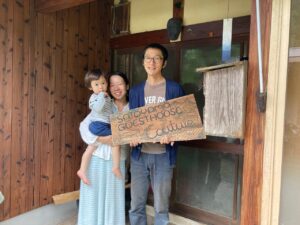
投稿タイプ:stay
Satoyama Guest House Couture
Kanbayashi, where Satoyama Guest House Couture is located, is to the east of Ayabe City, in the north of Kyoto Prefecture. It's about a 15 minute drive from the first traffic light to the guest house, which you'll find in the countryside, full of nature, where the Yura-gawa River and several other smaller rivers run. The garden is regularly visited by wild animals like deer, squirrels, and monkeys. There are many villages facing depopulation in Japan, but the number of young people moving to these villages has been increasing.
The four seasons of the countryside ("satoyama") here are beautiful. You'll also find several-thousand-year-old chesnut trees in an area that was registered as a quasi-national park in March, 2016, a perfect place for practicing some mindfulness.
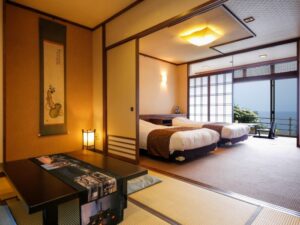
投稿タイプ:stay
Okuine Onsen Aburaya Bekken NAGOMITEI
Okuine Onsen Nagomitei is an onsen ryokan (a Japanese style inn with hot spring baths) overlooking the Sea of Japan, where every room has a private open air bath, and a view of the ocean horizon where you can watch the sun rise. Inside, Nagomitei has tatami flooring with an elevator and open-plan space, making it accessible for wheel chair use. Lately, most open air baths in guest rooms do not use hot spring water, but Nagomitei has a personal supply to the hot springs, which means you can bathe in water from natural hot springs around the clock. As for food, courses are brought directly to your room, so you can enjoy seasonal seafood and Tajima beef (a famous brand of wagyu beef) in peace and quiet. Nagomitei is a retreat especially for adults, so children under the age of 12 are not permitted. The ryokan was also placed in the top 100 for the 45th Professional Choice Hotel and Ryokan Japan Awards, and received one of ten Special Jury Awards for "small inns of Japan."
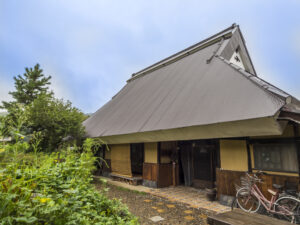
投稿タイプ:stay
Furuma-ya
Furuma-ya is an old country house located in the countryside of Miwa, in Fukuchiyama City, just 10 minutes on the express train from Kyoto Station.
We plough the small fields around the perimeter of the house, and harvest and cook the seasonal blessings of nature. On summer nights, we listen to the sounds of insects and the chorus of frogs as we cool ourselves outside, and in winter we warm up with a firewood stove. It may be modest, but this is how our family at Furuma-ya lives together in harmony with nature.
Come and visit us if you'd like to get away from the busy city and experience a bit of our country life.
"Furumaya" means "beautiful flower" in Nepali. Furuyama's owner hopes that this inn, too, will attract people as beautiful country flowers do, and become a place of rest and relaxation.

投稿タイプ:stay
Yakuno House
This inn is run by an Australian owner. Guests can freely use the entirety of the traditional Japanese house, built over 200 years ago. The kitchen has all the necessary utensils for cooking, and guests can also rent bicycles to explore the area. It's about a 30 minute ride to Takeda Castle and about 15 minutes to Fukuchiyama City. Both Japanese and English support is available.
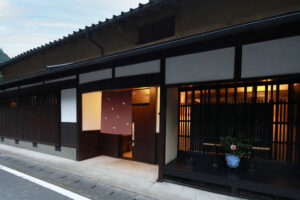
投稿タイプ:stay
Abura-ya
The beautiful countryside of Ohara is located deep in the mountains of Kyoto Tamba. Close to the venerated Ohara-jinja Shrine, Abura-ya is a 180 year-old merchant shop that has long been known locally by this name ("abura-ya" means "oil shop"). Here in the countryside, time flows along gently, slowly, and beautifully. We are so pleased to welcome you here. Visitors are welcomed to come and enjoy Abura-ya by reservation, with one group at a time.
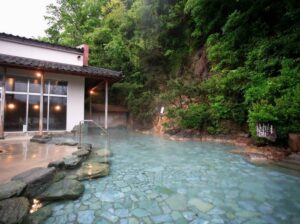
投稿タイプ:stay
Kumihama Onsen Yumotokan
Located in the north of the Kinki region, Kumihama Onsen Yumotokan prides itself on its spaciousness, with separate indoor male and female baths that can each accommodate up to 100 customers. Both male annd female baths have an outdoor bath and a medicinal bath. The male and female baths are open for day trip bathing use, and the water is beautiful and crystal clear, with a very fresh, minimally salty odor, making it a popular hot spring for locals.
Kumihama Onsen Yumotokan was founded by Mr. Yamada Rokuro and is now run by his son. There are various different plans to enjoy the day trip bathing experience, all of which include access to the hot springs, some with fruit-picking activities (cherries and melons), or the chef’s signature full course crab cuisine.
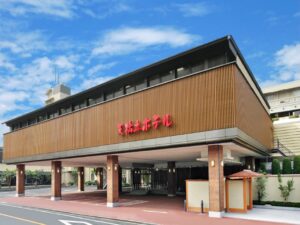
投稿タイプ:stay
Amanohashidate Hotel
Amanohashidate Hotel is in a prime location, about one minute on foot from Amanohashidate Station on the Kyoto Tango Railway, and 4 minutes' walk from the famous Monju-do Hall, where the "Monju Bosatsu," the Buddha of Wisdom, is enshrined.
There are a total of 13 separate natural hot spring baths, all of which are themed with the legend of Amanohashidate, and one of which is an open-air bath that looks out on a view of Amanohashidate itself—known as one of Japan’s three most famous scenic views. You can also enjoy the view of Amanohasidate from the guest rooms. For dinner, there is a seasonal kaiseki (formally arranged course) meal on offer, for which the winter specialty (from early November to the end of March) is crab.
